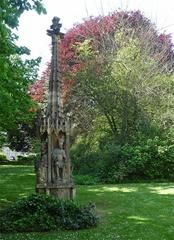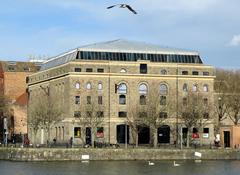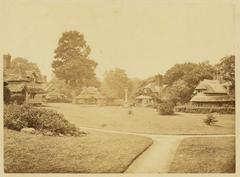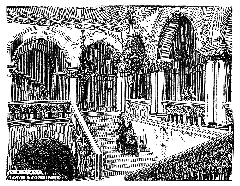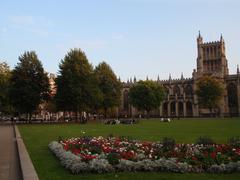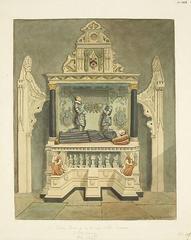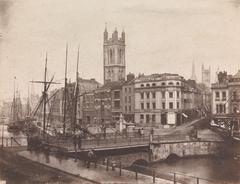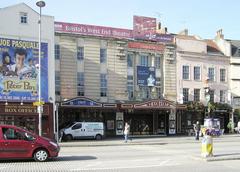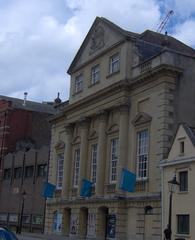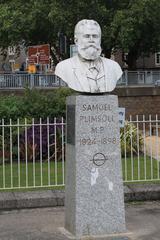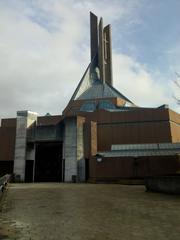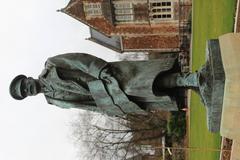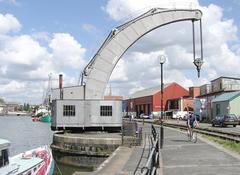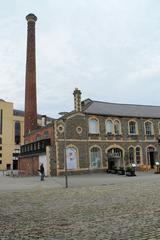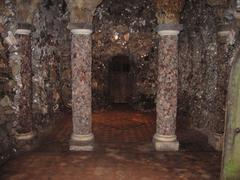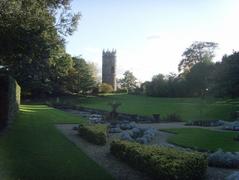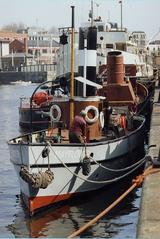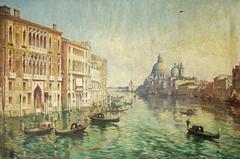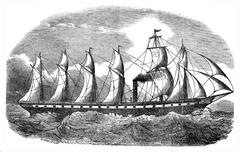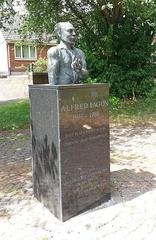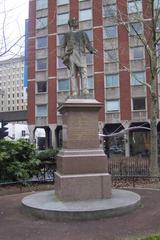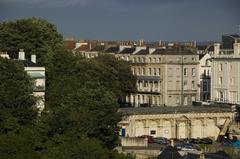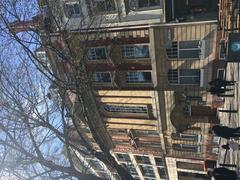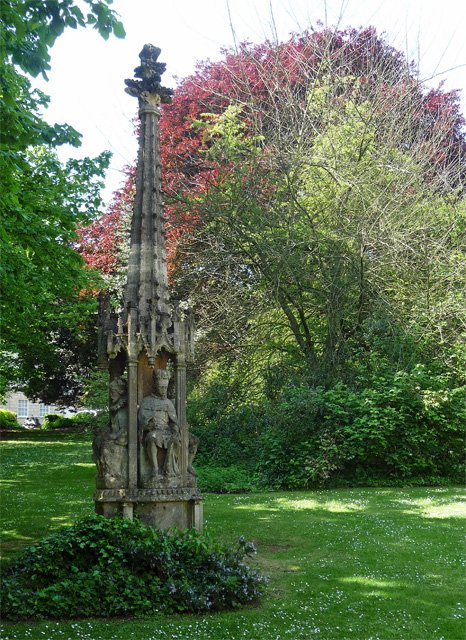
Bristol High Cross: Visiting Hours, Tickets, and Historical Sites Guide
Date: 14/06/2025
Introduction
At the heart of Bristol’s historic city center, the Bristol High Cross stands as a testament to the city’s medieval roots and civic pride. First erected in 1373—the same year Bristol was granted county status by King Edward III—the High Cross marked the intersection of the city’s four principal streets: Corn Street, Wine Street, Broad Street, and High Street. This iconic Gothic monument was both a civic symbol and the focal point for public life, commerce, and ceremonial events. Though the original structure no longer stands in its initial location, its legacy endures in Bristol’s urban landscape, commemorative replicas, and public memory (BristolWorld; Wikipedia: Bristol High Cross; National Trust Stourhead).
This guide explores the remarkable history, architecture, and cultural significance of the Bristol High Cross, along with practical information for visitors—covering hours, ticketing, accessibility, nearby attractions, and travel tips. Whether you are a history lover, a cultural traveler, or simply curious about Bristol’s rich past, this guide will help you connect with one of the city’s most enduring historical symbols.
Table of Contents
- Historical Background and Medieval Context
- Architectural Significance and Features
- Relocation and Legacy
- Bristol High Cross in Civic Life
- Visiting the High Cross: Locations, Hours & Tickets
- Nearby Attractions and Travel Tips
- Visitor Etiquette and Preservation
- Visuals and Media Recommendations
- Frequently Asked Questions (FAQ)
- Conclusion and Further Exploration
- References and Further Reading
Historical Background and Medieval Context
The Bristol High Cross was constructed in 1373 at a time of significant transformation for the city. Its location at the intersection of Corn Street, Wine Street, Broad Street, and High Street marked the epicenter of Bristol’s commercial and administrative life. These streets—some with Saxon origins—were the main arteries of the walled medieval city (BristolWorld).
The monument not only served as a geographic marker but also as a civic gathering point for public announcements, ceremonies, and market activities. Its presence reinforced the city’s new autonomy and status as a county in its own right (Local Learning, 2023; Bristol Ideas).
Architectural Significance and Features
The original Bristol High Cross was a striking example of Decorated Gothic civic architecture. Crafted from local stone, it featured a tall, slender shaft rising from a stepped base, surmounted by an ornate spire and cross. Multiple tiers displayed statues of English monarchs, including Edward III and Henry III, each beneath elaborate canopies adorned with Gothic tracery and heraldic shields (Wikipedia; Bristol Historical Association PDF).
Significant renovations in the 16th and 17th centuries added further tiers and statues, reflecting Bristol’s continued prosperity and civic pride. The monument’s rich ornamentation and vertical prominence made it a visible landmark at the heart of the city (Speel Sculpture).
Relocation and Legacy
By the 18th century, the growth of Bristol and increased traffic posed challenges for the medieval city center. In 1733, the High Cross was dismantled and relocated to College Green. In 1768, its upper portion was gifted to the Stourhead estate in Wiltshire, where it remains a garden feature today (National Trust Stourhead). The base was lost to history, but the monument’s memory lived on.
A Victorian replica was commissioned in 1851 and installed on College Green near Bristol Cathedral. This replica, now Grade II* listed, echoes the original’s Gothic detailing and continues to serve as a touchstone for Bristol’s medieval past (Historic England).
A small remnant of the cross—the spire—survives in Berkeley Square, serving as another link to the city’s layered history.
Bristol High Cross in Civic Life
The High Cross was central to Bristol’s civic identity and public life:
- Ceremonial Hub: Hosted royal proclamations, market gatherings, and city celebrations.
- Symbol of Autonomy: Marked Bristol’s emergence as an independent county and a major medieval port (Local Learning, 2023).
- Architectural Statement: Its statues, heraldic shields, and crosses underscored loyalty to the Crown and Christian values.
- Community Space: Served as a meeting place for citizens, merchants, and officials.
The High Cross’s removal reflected the city’s evolution and modernization, but its story is preserved in local memory, commemorative plaques, and educational resources.
Visiting the High Cross: Locations, Hours & Tickets
1. Victorian Replica on College Green (Bristol City Center)
- Location: College Green, Bristol BS1 5TJ, United Kingdom
- Visiting Hours: Open public space, accessible 24/7 year-round
- Tickets/Entry Fee: None
- Accessibility: Wheelchair accessible with paved paths
2. Original Monument (Stourhead Estate, Wiltshire)
- Location: Stourhead, Wiltshire
- Visiting Hours: Typically 10:30 AM – 5:30 PM (seasonal variations)
- Tickets/Entry Fee: Required for entry to Stourhead. Visit National Trust Stourhead for details.
- Accessibility: Wheelchair access and facilities available
3. High Cross Spire (Berkeley Square, Bristol)
- Location: Berkeley Square, near Park Street, Bristol
- Visiting Hours: Public square, accessible at all times
- Tickets/Entry Fee: None
Nearby Attractions and Travel Tips
- Bristol Cathedral: Magnificent Gothic architecture just steps from College Green (Bristol Cathedral).
- Bristol Museum & Art Gallery: Local history, art, and archaeology (Bristol Museum).
- St John’s Gate: Remnant of the old city wall on Broad Street.
- Harbourside: Vibrant waterfront with attractions like M Shed and SS Great Britain (You Could Travel).
Travel Tips:
- College Green and Berkeley Square are centrally located and easily reached by foot, bus, or bike.
- Bristol Temple Meads station is a 20-minute walk from College Green.
- Guided walking tours often include the High Cross and medieval Old City (Visit Bristol).
- Spring and summer offer pleasant weather; early mornings and weekdays are quieter.
Visitor Etiquette and Preservation
- Treat the monument and its surroundings with respect.
- Do not climb or sit on the High Cross structures.
- Read nearby plaques for historical insights.
- Participate in guided tours for a deeper understanding of Bristol’s heritage.
Visuals and Media Recommendations
- Seek out high-quality images of the High Cross and related sites on official tourism websites.
- Use descriptive alt text for photos such as “Bristol High Cross replica on College Green” or “Original High Cross at Stourhead.”
- Explore virtual tours and interactive maps via Visit Bristol.
- Consider using media to enhance accessibility and SEO.
Frequently Asked Questions (FAQ)
Q: Where can I see the original Bristol High Cross?
A: At Stourhead estate in Wiltshire (National Trust Stourhead).
Q: Is there an entry fee to view the High Cross in Bristol?
A: No, both the replica on College Green and the spire in Berkeley Square are free to visit.
Q: Are guided tours available?
A: Yes, walking tours of Bristol’s Old City often include the High Cross (Visit Bristol).
Q: Is the site wheelchair accessible?
A: Yes, both College Green and Berkeley Square have paved, level access.
Q: What are the best times to visit?
A: Spring and summer; early weekdays for fewer crowds.
Conclusion and Further Exploration
The Bristol High Cross remains a potent symbol of the city’s medieval heritage, civic pride, and architectural grandeur. Though the original monument has been dispersed—with its spire in Berkeley Square and its upper portion at Stourhead—its legacy endures in Bristol’s urban fabric, commemorative replicas, and educational initiatives. By visiting the High Cross, exploring nearby historical sites, and engaging with local tours, you can deepen your appreciation for Bristol’s remarkable history.
For updates on visiting hours, guided tours, and events, download the Audiala app, check Visit Bristol, and explore related articles and heritage trails.
References and Further Reading
- BristolWorld
- Wikipedia: Bristol High Cross
- National Trust Stourhead
- Bristol Historical Association PDF
- Local Learning, 2023
- Visit Bristol
- Bristol Museum & Art Gallery
- You Could Travel
- Historic England
- Secret Bristol
- Bristol Cathedral
